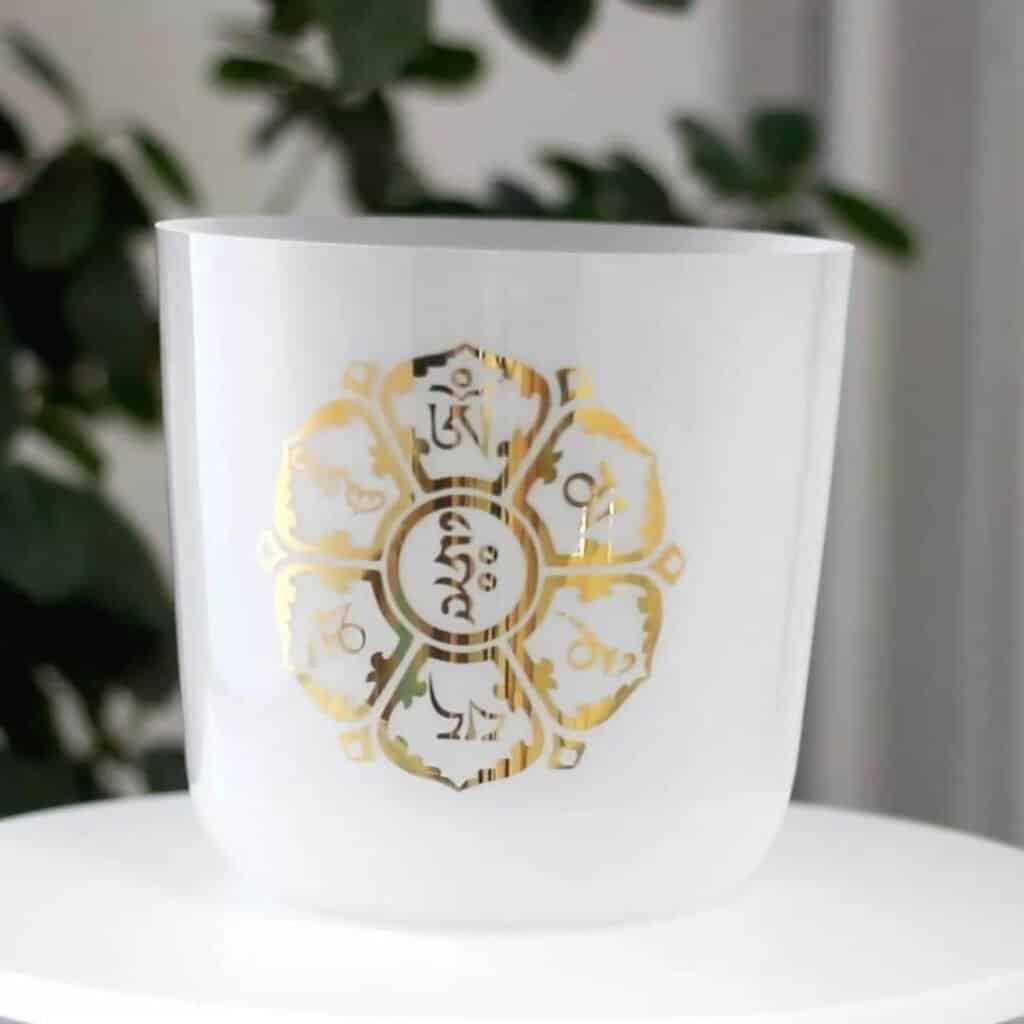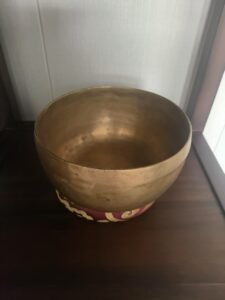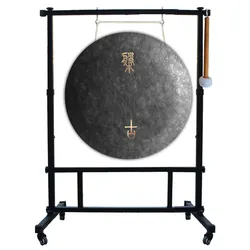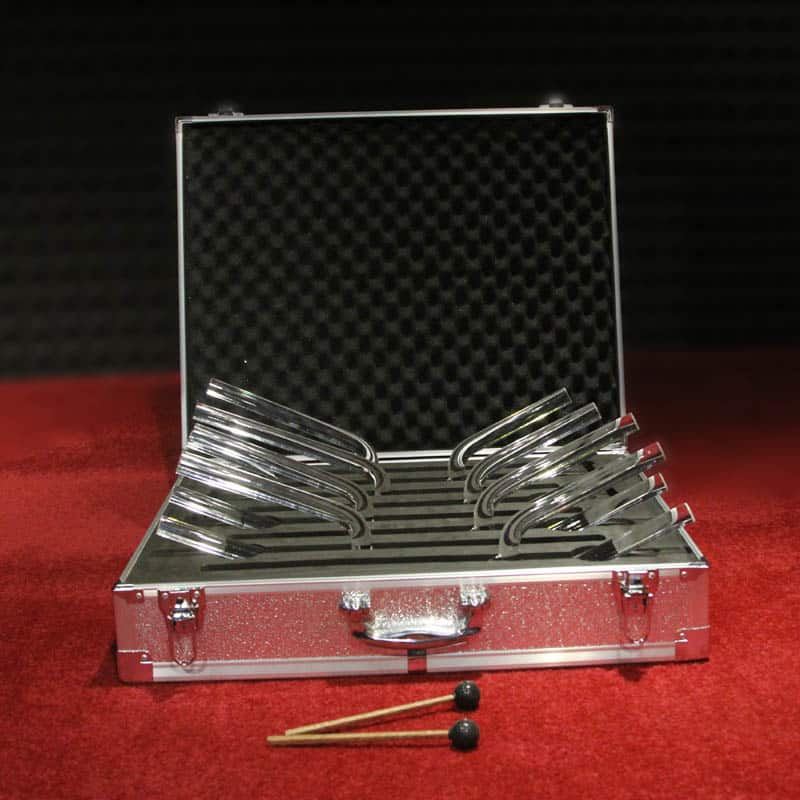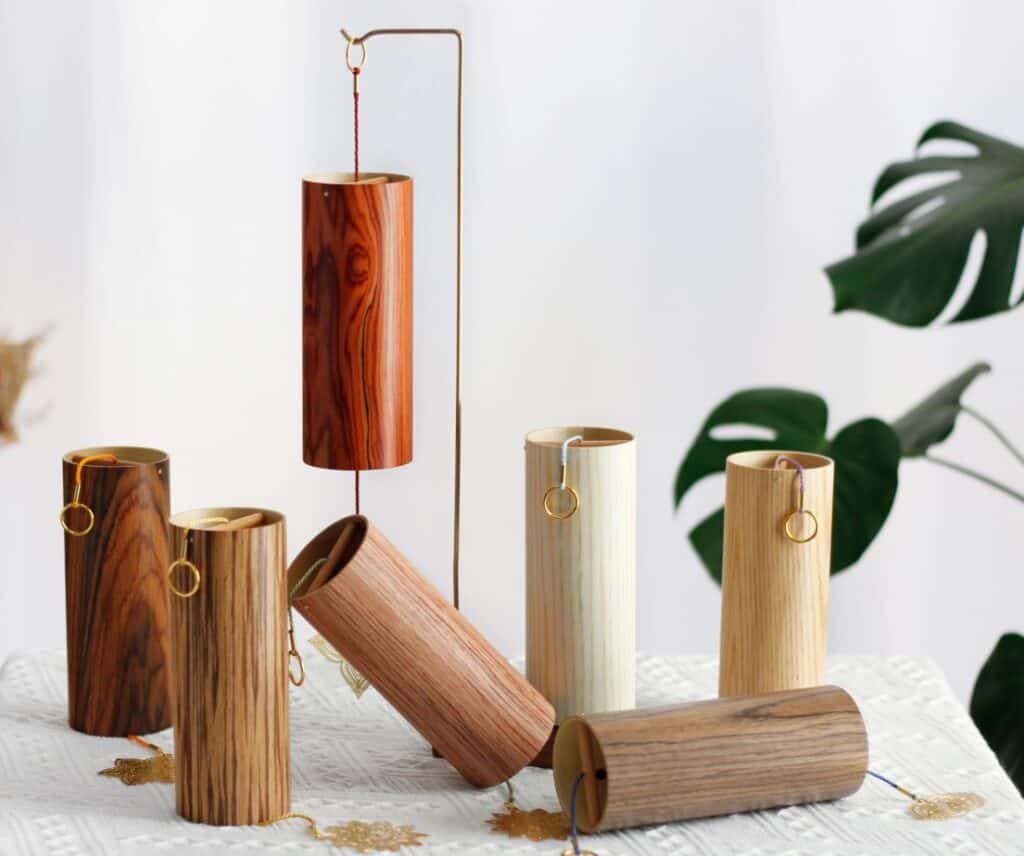Bamboo wind chimes represent a unique and harmonious blend of natural beauty, sustainable construction, and distinctive acoustic properties that set them apart from metal or synthetic wind instruments. These organic sound makers have captured the attention of garden enthusiasts, meditation practitioners, and sound healing devotees who appreciate both the gentle, earthy tones that bamboo produces and the environmental consciousness that natural materials represent.
The benefits of natural bamboo construction extend far beyond simple aesthetics to include sustainable harvesting practices, biodegradable materials, and acoustic characteristics that create warm, mellow tones impossible to replicate with artificial materials. Bamboo’s hollow structure, natural resonance properties, and organic density variations produce complex harmonic content that feels both musical and deeply connected to natural rhythms and environmental harmony.
The growing popularity of bamboo wind chimes in meditation, garden design, and sound healing reflects increasing appreciation for natural materials and organic acoustic experiences that support wellness and environmental awareness. Unlike mass-produced metal chimes that often prioritize volume and dramatic effect, bamboo wind chimes emphasize gentle presence, natural harmony, and subtle acoustic beauty that enhances rather than dominates outdoor environments.
Selecting the right bamboo wind chime requires understanding multiple factors including construction quality, acoustic properties, size considerations, and intended applications that determine both immediate satisfaction and long-term enjoyment of your investment. The natural variations inherent in bamboo materials mean that each chime possesses unique characteristics that must be evaluated individually rather than assumed based on brand or price alone.
This comprehensive guide will help you navigate the selection process by exploring construction types, acoustic properties, quality indicators, and practical considerations that ensure your bamboo wind chime choice provides years of beautiful sound and visual pleasure while serving your specific aesthetic and functional goals effectively.
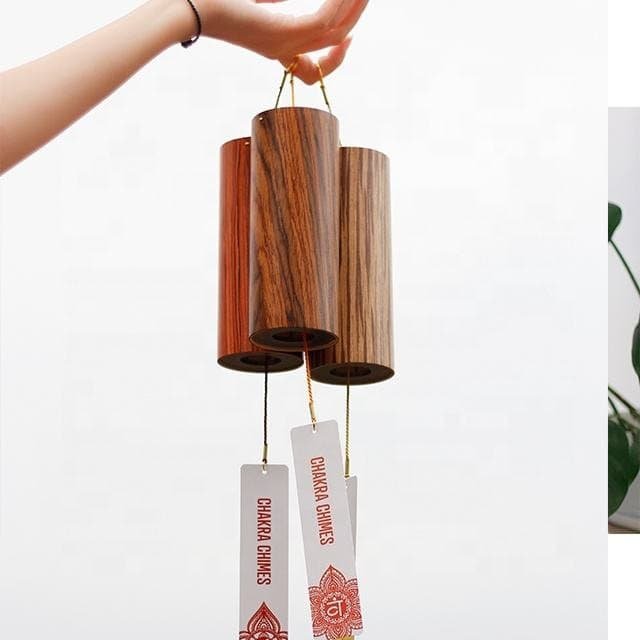
Understanding Bamboo Wind Chime Construction and Types
The construction methods and materials used in bamboo wind chimes significantly impact both their acoustic performance and longevity, making understanding of different approaches essential for selecting instruments that meet your specific needs and expectations.
Natural bamboo versus processed bamboo materials represent fundamental choices that affect both sound quality and environmental impact. Natural bamboo, harvested and prepared with minimal processing, retains the organic characteristics and acoustic properties that make bamboo wind chimes distinctive, including natural density variations, hollow chamber characteristics, and surface textures that contribute to unique tonal qualities.
Natural bamboo construction preserves the irregular wall thickness and organic chamber shapes that create complex harmonic content impossible to achieve with uniform synthetic materials. These natural variations contribute to the warm, organic sound character that distinguishes quality bamboo wind chimes from mass-produced alternatives while maintaining the environmental sustainability that appeals to ecologically conscious consumers.
However, natural bamboo requires careful selection and preparation to ensure adequate durability and weather resistance for outdoor use. Quality manufacturers understand which bamboo species, harvest timing, and preparation methods produce instruments that balance acoustic excellence with practical longevity in challenging outdoor environments.
Processed bamboo materials may involve treatments that enhance durability and weather resistance while potentially affecting acoustic characteristics and environmental impact. Understanding these trade-offs helps evaluate whether processing enhances or detracts from the qualities you seek in bamboo wind chime ownership and use.
Single-tube versus multi-tube configurations create different acoustic and visual effects that serve various aesthetic and functional preferences. Single-tube bamboo chimes emphasize simplicity and showcase the natural beauty of individual bamboo pieces while producing pure, focused tones that highlight the acoustic characteristics of the bamboo material itself.
Multi-tube configurations allow for harmonic relationships and chord-like effects that create more complex acoustic environments while providing visual interest through varied tube lengths and arrangements. These designs often incorporate musical intervals and tuning systems that transform wind activation into recognizable musical content.
The choice between single and multi-tube designs often depends on intended use, aesthetic preferences, and acoustic goals that may emphasize either simplicity and natural purity or complexity and musical sophistication in wind chime sound production and visual presentation.
Consider how tube quantity affects both visual weight and acoustic complexity while ensuring that your choice serves intended applications and environmental contexts where the wind chime will be installed and enjoyed over time.
Hollow bamboo construction for optimal resonance requires understanding how internal chamber characteristics affect sound production and ensuring that your chosen chime utilizes bamboo’s natural resonant properties effectively rather than merely copying the appearance of quality construction.
The hollow chambers within bamboo tubes create the resonant cavities essential for sustained tone production and harmonic development that distinguish quality bamboo wind chimes from solid or poorly designed alternatives. Chamber volume, wall thickness, and internal surface characteristics all contribute to acoustic performance and tonal quality.
Quality bamboo wind chime construction maintains open chambers while ensuring adequate structural integrity for outdoor use and wind activation. Blocked or partially filled chambers significantly reduce acoustic performance while potentially creating harsh or unsatisfying sound characteristics that detract from wind chime enjoyment.
Internal chamber preparation may involve cleaning, sizing, or treatment procedures that optimize acoustic performance while maintaining structural integrity essential for long-term outdoor use and reliable sound production throughout varying weather conditions.
Traditional versus modern manufacturing techniques affect both acoustic authenticity and practical performance characteristics. Traditional methods often emphasize hand selection of materials, individual acoustic optimization, and cultural authenticity that appeals to those seeking genuine bamboo wind chime experiences rooted in historical practices.
Modern manufacturing may introduce quality control procedures, standardized treatments, and efficiency improvements that enhance consistency and durability while potentially affecting the unique character and individual variation that characterize traditional bamboo wind chime construction.
Understanding manufacturing approaches helps evaluate whether traditional authenticity or modern consistency better serves your priorities and expectations for bamboo wind chime ownership and satisfaction throughout extended use periods.
Size variations and their impact on tone and volume require understanding the relationship between bamboo tube dimensions and acoustic output to ensure your selection provides appropriate sound characteristics for intended applications and environmental contexts.
Larger bamboo tubes generally produce lower pitches with greater volume output, while smaller tubes create higher frequencies with more intimate acoustic presence. The relationship between tube length, diameter, and wall thickness determines fundamental frequency and harmonic content that characterize each wind chime’s acoustic signature.
Understanding size-to-sound relationships helps predict acoustic performance while ensuring that your bamboo wind chime selection provides appropriate volume levels and tonal characteristics for intended installation locations and listening preferences.
Suspension systems and hanging mechanisms affect both acoustic performance and practical installation requirements. Quality suspension systems allow tubes to move freely and interact naturally with wind currents while maintaining proper positioning and preventing damage from excessive movement or collision during active weather conditions.
Traditional suspension methods may use natural materials like hemp or cotton cord that complement bamboo aesthetics while providing adequate support and movement freedom for optimal acoustic activation and sound production.
Modern suspension systems might incorporate synthetic materials or hardware that enhance durability and weather resistance while potentially affecting aesthetic coherence and natural appearance that appeals to those preferring organic construction throughout all wind chime components.
Acoustic Properties and Sound Quality Assessment
Understanding and evaluating the acoustic properties of bamboo wind chimes ensures that your selection provides satisfying sound quality while meeting specific tonal preferences and application requirements that determine long-term enjoyment and satisfaction.
How bamboo density and thickness affect tone quality involves understanding the relationship between material characteristics and acoustic output that determines the fundamental sound character of different bamboo wind chime designs and construction approaches.
Bamboo density varies significantly among different species and individual pieces, affecting both acoustic transmission and resonant characteristics that determine tone quality and harmonic content. Denser bamboo typically produces brighter, more focused tones with excellent projection, while less dense varieties may create warmer, more diffuse sounds with complex harmonic development.
Wall thickness relationships between inner chamber volume and structural material affect both resonant frequency and tonal character. Thicker walls generally produce deeper, more sustained tones with rich harmonic content, while thinner walls may create brighter, more immediate sounds with faster decay characteristics.
Understanding these material relationships helps predict acoustic performance while enabling informed comparisons between different bamboo wind chime options based on material characteristics visible through examination of construction and bamboo selection quality.
The natural variations in bamboo density and thickness mean that each wind chime possesses unique acoustic characteristics that require individual evaluation rather than assumptions based on general specifications or manufacturer descriptions alone.
Pitch ranges and frequency characteristics of bamboo tubes depend on dimensional relationships and material properties that determine the fundamental frequencies and harmonic content available from different bamboo wind chime designs and construction approaches.
Bamboo tube length primarily determines fundamental frequency, with longer tubes producing lower pitches and shorter tubes creating higher frequencies according to acoustic principles governing resonant cavity behavior and harmonic series development.
Diameter and wall thickness modifications affect both fundamental frequency and harmonic content, creating opportunities for tuning adjustment and tonal character development that distinguish quality bamboo wind chimes from basic alternatives lacking acoustic optimization.
Understanding frequency characteristics helps evaluate whether specific bamboo wind chimes provide desired pitch ranges and tonal relationships while ensuring compatibility with intended applications and personal preferences for acoustic content and musical character.
Volume levels and projection capabilities vary significantly among bamboo wind chime designs based on construction methods, material selection, and acoustic optimization that affects how effectively sound reaches listeners in different environmental contexts and installation locations.
Bamboo wind chimes generally produce more intimate volume levels compared to metal alternatives, emphasizing gentle presence and subtle acoustic beauty rather than dramatic projection that might overwhelm outdoor environments or disturb neighbors in residential settings.
Chamber volume, wall thickness, and suspension design all contribute to acoustic output levels while affecting how effectively wind energy converts to audible sound production throughout varying weather conditions and wind speed ranges.
Evaluate volume characteristics in relation to intended installation locations while considering whether gentle bamboo tones provide adequate presence for your acoustic preferences and environmental contexts where the wind chime will be enjoyed.
Sustain and decay characteristics unique to bamboo create distinctive acoustic experiences that differ markedly from metal wind chimes while providing organic sound development that complements natural outdoor environments and meditation applications.
Bamboo’s organic structure and density variations produce complex decay patterns where tones fade gradually while developing changing harmonic content throughout the sustain period, creating evolving acoustic experiences rather than simple volume reduction over time.
The natural dampening characteristics of bamboo materials create softer attack and more gradual tone development compared to harder materials, producing acoustic experiences that feel organic and connected to natural processes rather than mechanical or artificial.
These sustain characteristics often prove particularly appealing for meditation and relaxation applications where gentle, evolving sounds support contemplative states rather than demanding attention through dramatic acoustic effects or sudden volume changes.
Harmonic relationships in multi-tube designs determine whether bamboo wind chimes produce random acoustic collections or intentional musical content that enhances aesthetic and acoustic coherence throughout wind activation and sound production.
Quality multi-tube bamboo wind chimes often incorporate specific tuning relationships that create consonant harmonic intervals when multiple tubes sound simultaneously, producing chord-like effects that feel musical and aesthetically satisfying rather than randomly cacophonous.
Traditional tuning systems may emphasize cultural authenticity and historical accuracy while providing harmonic relationships developed through centuries of bamboo wind chime evolution and musical tradition in various cultural contexts.
Understanding harmonic design helps evaluate whether specific bamboo wind chimes provide musical coherence and aesthetic satisfaction while ensuring that multiple tube interactions create pleasing rather than conflicting acoustic results during wind activation.
Environmental factors affecting sound production include wind speed requirements, temperature effects, humidity influences, and seasonal variations that affect both acoustic output and long-term performance characteristics of bamboo wind chime installations.
Bamboo wind chimes typically require moderate wind speeds for optimal activation, as gentle breezes may not provide sufficient energy for full acoustic development while strong winds might create overwhelming volume or potential damage to delicate bamboo construction.
Temperature and humidity changes affect bamboo dimensions and acoustic characteristics, potentially causing tuning variations and tonal changes throughout seasonal cycles that require understanding and acceptance as natural characteristics of organic wind chime materials.
Consider local climate conditions and seasonal weather patterns while evaluating whether bamboo wind chimes provide consistent satisfaction throughout annual cycles and varying environmental conditions affecting outdoor installations.
Testing sound quality before purchase provides essential evaluation opportunities that ensure acoustic satisfaction while allowing comparison between different options and verification that marketing descriptions match actual acoustic performance and construction quality.
Listen to bamboo wind chimes under conditions similar to intended use while evaluating tonal quality, volume appropriateness, and harmonic relationships that determine long-term satisfaction and acoustic enjoyment throughout regular use.
Test wind activation requirements and acoustic response while noting any harsh or unpleasant sounds that might indicate poor construction or inappropriate tuning that could affect long-term enjoyment and satisfaction with wind chime ownership.
Document acoustic impressions and preferences while comparing different options to build understanding of personal preferences and priorities that guide selection decisions and ensure satisfaction with final bamboo wind chime choices.
Size Selection for Different Applications
Selecting appropriate bamboo wind chime sizes requires understanding how dimensions affect both acoustic performance and practical installation considerations while matching chime characteristics to specific applications and environmental contexts.
Small bamboo chimes for indoor and intimate spaces provide gentle acoustic presence suitable for enclosed environments while offering portability and versatility that serves various applications from bedroom relaxation to office stress relief and meditation support.
Indoor bamboo wind chimes typically measure 12-18 inches in total length while producing soft, intimate tones that complement rather than dominate interior acoustic environments. These smaller instruments often work well near windows, in meditation spaces, or as decorative elements that occasionally provide gentle sound activation.
Intimate outdoor spaces like small patios, reading nooks, or garden corners may benefit from small bamboo chimes that provide acoustic interest without overwhelming limited space or creating volume levels inappropriate for close proximity to neighbors or quiet outdoor activities.
Consider acoustic sensitivity in indoor applications while ensuring that even gentle wind activation produces pleasing rather than intrusive sounds that enhance rather than interfere with indoor activities and relaxation goals.
Medium chimes for patios, gardens, and moderate wind areas represent popular choices that balance acoustic presence with practical versatility while providing satisfying sound production throughout typical outdoor residential applications and garden installations.
Medium bamboo wind chimes generally range from 18-30 inches in total length while producing moderate volume levels suitable for most outdoor residential applications without creating noise concerns or overwhelming acoustic presence that might disturb neighbors or dominate outdoor environments.
These sizes often provide optimal acoustic performance for typical wind conditions while maintaining manageable installation requirements and reasonable costs that make quality bamboo wind chimes accessible for most garden and patio applications.
Garden integration considerations include visual proportion, acoustic compatibility with outdoor activities, and wind exposure levels that ensure consistent performance throughout varying seasonal conditions and weather patterns affecting medium-sized wind chime installations.
Large chimes for spacious outdoor environments require adequate space, structural support, and appropriate wind exposure while providing dramatic acoustic presence suitable for expansive gardens, large patios, or rural settings where volume and projection enhance rather than overwhelm environmental acoustics.
Large bamboo wind chimes often exceed 30 inches in total length while producing substantial volume levels that require careful consideration of installation location, neighbor proximity, and local regulations that might restrict outdoor sound production or musical installations.
Spacious outdoor environments allow large bamboo chimes to develop full acoustic potential while providing appropriate visual proportion that complements rather than overwhelms landscape design and architectural elements throughout garden and property installations.
Consider structural requirements for hanging large bamboo chimes while ensuring adequate support and appropriate positioning that maintains safety while optimizing acoustic performance throughout extended outdoor exposure and weather conditions.
Length-to-diameter ratios for optimal acoustic performance involve understanding proportional relationships that determine fundamental frequency, harmonic content, and overall acoustic quality in bamboo wind chime design and construction optimization.
Traditional bamboo wind chime proportions often reflect cultural knowledge and historical development that optimizes acoustic performance while maintaining aesthetic coherence and construction efficiency throughout manufacturing and installation processes.
Acoustic optimization may involve specific length-to-diameter relationships that maximize resonant chamber effectiveness while ensuring structural integrity and weather resistance essential for outdoor applications and long-term performance satisfaction.
Understanding proportional relationships helps evaluate construction quality while identifying bamboo wind chimes that utilize optimal dimensional relationships for superior acoustic performance compared to alternatives lacking acoustic optimization and engineering consideration.
Weight considerations for hanging and wind response affect both installation requirements and acoustic activation characteristics that determine how effectively bamboo wind chimes respond to available wind energy while maintaining structural integrity throughout extended outdoor use.
Heavier bamboo wind chimes require stronger mounting systems while potentially requiring higher wind speeds for activation, affecting acoustic performance in low-wind environments where lighter alternatives might provide more consistent sound production.
Lighter constructions may respond more readily to gentle breezes while potentially lacking acoustic substance or structural durability needed for reliable outdoor performance throughout challenging weather conditions and extended exposure periods.
Balance weight considerations with acoustic goals while ensuring installation capability and wind response characteristics that serve intended applications and environmental conditions affecting bamboo wind chime performance and satisfaction.
Balancing size with local wind conditions ensures optimal acoustic performance while preventing damage from excessive wind exposure or disappointment from inadequate activation throughout varying seasonal and weather conditions affecting outdoor wind chime installations.
Evaluate typical wind patterns, seasonal variations, and extreme weather potential while selecting bamboo wind chime sizes that provide consistent acoustic satisfaction without creating safety concerns or maintenance challenges throughout annual weather cycles.
Consider microclimate factors including building protection, landscape features, and elevation effects that modify wind patterns while affecting bamboo wind chime performance and determining optimal size selection for specific installation locations and environmental contexts.
Document local wind conditions and seasonal patterns while planning bamboo wind chime installations that maximize acoustic enjoyment while minimizing weather-related challenges and maintenance requirements throughout extended ownership periods.
Quality Factors and Durability Considerations
Assessing quality and durability in bamboo wind chimes requires understanding material characteristics, construction methods, and treatment processes that determine both immediate performance and long-term satisfaction throughout outdoor exposure and regular use.
Signs of high-quality bamboo selection and preparation include visual indicators, construction details, and material characteristics that distinguish superior instruments from lower-quality alternatives lacking proper bamboo selection and preparation procedures essential for durability and acoustic performance.
Quality bamboo exhibits consistent color, smooth surface texture, and freedom from cracks, splits, or other structural defects that might affect both aesthetic appearance and acoustic performance throughout extended outdoor use and weather exposure.
Proper bamboo preparation involves adequate drying, sizing, and treatment procedures that optimize both acoustic properties and weather resistance while maintaining natural characteristics and aesthetic appeal that distinguish bamboo wind chimes from synthetic alternatives.
Wall thickness consistency and chamber cleanliness indicate careful selection and preparation while affecting acoustic performance and structural integrity essential for reliable outdoor performance throughout varying weather conditions and seasonal cycles.
Examine bamboo grain patterns, node positioning, and overall construction quality while evaluating whether preparation procedures meet standards necessary for satisfactory long-term performance and acoustic quality throughout regular outdoor use.
Natural treatments and preservation methods affect both durability and environmental impact while determining long-term performance characteristics and maintenance requirements essential for outdoor bamboo wind chime installations and continued acoustic satisfaction.
Traditional preservation methods may emphasize natural treatments that maintain bamboo’s organic characteristics while providing adequate weather resistance for outdoor applications throughout typical seasonal cycles and weather exposure conditions.
Modern preservation treatments might incorporate synthetic compounds that enhance durability and weather resistance while potentially affecting acoustic characteristics and environmental compatibility that appeal to ecologically conscious consumers seeking sustainable wind chime options.
Understanding treatment approaches helps evaluate trade-offs between durability enhancement and natural authenticity while ensuring that preservation methods support rather than compromise intended use goals and personal preferences for environmental responsibility.
Weather resistance and outdoor durability requirements vary based on climate conditions, installation locations, and exposure levels that determine appropriate quality standards and construction specifications for satisfactory bamboo wind chime performance throughout extended outdoor use.
UV resistance prevents degradation and color changes that affect both aesthetic appearance and structural integrity while ensuring continued acoustic performance throughout extended sun exposure typical of outdoor wind chime installations.
Moisture resistance prevents rot, warping, and structural failure while maintaining acoustic characteristics and aesthetic appeal throughout humid conditions and precipitation exposure affecting outdoor installations throughout annual weather cycles.
Temperature stability prevents cracking and dimensional changes that could affect tuning accuracy and structural integrity while ensuring consistent performance throughout seasonal temperature variations and climate extremes affecting outdoor installations.
Joint construction and connection reliability determine structural integrity and long-term performance while affecting both acoustic quality and safety throughout extended outdoor use and weather exposure conditions.
Quality joint construction utilizes appropriate materials and techniques that maintain structural integrity while allowing necessary movement and flexibility for wind activation and acoustic performance throughout regular use and weather exposure.
Connection hardware should resist corrosion and weathering while maintaining secure attachment throughout wind loads and weather conditions that stress joint connections and suspension systems during active outdoor use.
Evaluate joint quality and connection reliability while considering maintenance requirements and replacement procedures that ensure continued performance and safety throughout extended bamboo wind chime ownership and outdoor installation.
Finish quality and protective coatings affect both aesthetic appearance and durability while determining maintenance requirements and weather resistance throughout outdoor exposure and extended use conditions.
Natural finishes may emphasize organic appearance and environmental compatibility while potentially requiring more frequent maintenance and careful installation location selection to ensure adequate weather protection and longevity.
Protective coatings might enhance durability and weather resistance while affecting acoustic characteristics and aesthetic appeal that influence both performance satisfaction and visual integration with garden and landscape design elements.
Understanding finish options helps balance aesthetic preferences with practical requirements while ensuring that protective treatments support rather than compromise intended use goals and long-term satisfaction throughout bamboo wind chime ownership.
Expected lifespan and maintenance requirements help establish realistic expectations while planning installation procedures and care routines that maximize bamboo wind chime longevity and continued satisfaction throughout ownership periods.
Quality bamboo wind chimes with proper installation and maintenance often provide several years of satisfactory performance while requiring periodic inspection and care procedures that maintain both acoustic quality and structural integrity.
Maintenance requirements may include cleaning, repositioning, and periodic treatment procedures that preserve bamboo characteristics while ensuring continued weather resistance and acoustic performance throughout extended outdoor exposure.
Plan maintenance schedules and procedures while considering seasonal requirements and care capabilities that support long-term satisfaction and optimal performance throughout bamboo wind chime ownership and outdoor installation.
Identifying poorly constructed or treated bamboo prevents disappointing purchases while ensuring investment in quality instruments that provide satisfactory performance and durability throughout intended use applications and environmental conditions.
Poor bamboo selection often exhibits visible defects including uneven coloration, surface irregularities, structural weaknesses, or inadequate preparation that affects both immediate appearance and long-term performance potential.
Inadequate treatment procedures may result in premature weathering, acoustic degradation, or structural failure that significantly reduces satisfaction and requires premature replacement despite initial cost considerations and purchase decisions.
Examine construction details, material quality, and finish characteristics while avoiding alternatives that exhibit quality deficiencies or construction shortcuts that compromise both performance and durability throughout outdoor use and weather exposure.
Tuning Systems and Musical Considerations

Understanding tuning systems and musical relationships in bamboo wind chimes helps evaluate aesthetic and acoustic coherence while ensuring that harmonic content meets personal preferences and intended applications for musical and meditative use.
Pentatonic scales and traditional Asian tuning systems represent authentic approaches to bamboo wind chime tuning that emphasize cultural heritage and musical traditions developed through centuries of bamboo instrument evolution and musical practice.
Traditional pentatonic tuning creates five-note scales that produce consonant harmonic relationships when multiple tubes sound simultaneously while avoiding dissonant intervals that might create unpleasant acoustic combinations during wind activation.
Asian tuning systems often emphasize specific modal characteristics and cultural associations that appeal to those seeking authentic bamboo wind chime experiences rooted in traditional musical practices and spiritual applications.
Understanding traditional tuning approaches helps evaluate cultural authenticity while determining whether specific bamboo wind chimes provide desired musical characteristics and harmonic relationships throughout wind activation and acoustic performance.
Western musical scales in bamboo wind chime design adapt familiar harmonic relationships to bamboo construction while creating instruments that integrate well with Western musical sensibilities and garden design aesthetics.
Major and minor scale relationships provide familiar harmonic content that appeals to those preferring conventional musical intervals and chord relationships in wind chime sound production and acoustic experiences.
Chromatic tuning approaches might incorporate additional notes and complex harmonic relationships that create sophisticated musical content while potentially increasing acoustic complexity that serves advanced musical applications and listening preferences.
Western tuning adaptations may sacrifice some cultural authenticity while providing musical accessibility and harmonic familiarity that enhance satisfaction for those preferring conventional musical relationships in wind chime acoustic experiences.
Random versus intentional tuning approaches create different aesthetic experiences that serve various preferences for musical coherence versus organic unpredictability in wind chime sound production and acoustic character.
Intentional tuning emphasizes musical relationships and harmonic coherence that create aesthetically satisfying acoustic experiences while providing predictable musical content that enhances meditation and relaxation applications.
Random tuning approaches may emphasize natural unpredictability and organic sound character that reflects environmental randomness while potentially creating more complex and varied acoustic experiences throughout wind activation.
The choice between intentional and random tuning often depends on personal preferences for musical structure versus natural spontaneity in wind chime acoustic experiences and aesthetic goals throughout regular listening and garden enjoyment.
Harmonic compatibility and chord relationships determine whether multiple bamboo tubes create pleasant musical intervals when activated simultaneously while affecting overall acoustic satisfaction and musical coherence throughout wind chime performance.
Consonant intervals including fifths, octaves, and major thirds create harmonious combinations that feel musically satisfying while supporting meditation and relaxation applications through pleasant acoustic relationships and harmonic stability.
Dissonant intervals might create tension and complexity that appeals to some listeners while potentially proving unsettling or unpleasant for those preferring stable harmonic relationships and peaceful acoustic environments.
Understanding harmonic relationships helps evaluate musical quality while ensuring that bamboo wind chime selections provide desired acoustic character and harmonic satisfaction throughout regular use and listening experiences.
Cultural significance of different tuning systems provides context for authenticity and traditional accuracy while helping evaluate whether specific bamboo wind chimes honor cultural heritage appropriately and respectfully.
Traditional Asian tuning systems often carry cultural and spiritual associations that enhance meaning and authenticity for those seeking genuine cultural experiences and traditional musical accuracy in bamboo wind chime ownership and use.
Adapted or modern tuning approaches might prioritize accessibility and contemporary musical sensibilities while potentially sacrificing cultural authenticity and traditional accuracy that appeals to those seeking genuine cultural connections.
Research cultural contexts and tuning traditions while considering whether authenticity or accessibility better serves personal preferences and intended applications for bamboo wind chime ownership and acoustic experiences.
Personal preference versus traditional authenticity requires balancing individual taste with cultural respect while ensuring that bamboo wind chime selections provide satisfactory acoustic experiences that honor both personal preferences and cultural traditions appropriately.
Individual acoustic preferences may emphasize specific harmonic relationships, volume levels, or tonal characteristics that serve personal meditation practices, aesthetic goals, or garden design integration requirements throughout bamboo wind chime ownership.
Traditional authenticity considerations involve respecting cultural heritage and musical traditions while avoiding inappropriate appropriation or misrepresentation of traditional practices and cultural significance in bamboo wind chime selection and use.
Balance personal satisfaction with cultural respect while choosing bamboo wind chimes that provide desired acoustic experiences while honoring traditional knowledge and cultural heritage appropriately throughout ownership and use.
Aesthetic Design and Visual Appeal
The visual characteristics of bamboo wind chimes significantly impact both immediate aesthetic satisfaction and long-term enjoyment while affecting integration with garden design and architectural elements throughout installation and seasonal changes.
Natural bamboo appearance versus decorative treatments represents fundamental aesthetic choices that affect both visual integration and maintenance requirements while determining overall aesthetic coherence and design compatibility throughout garden and landscape installations.
Natural bamboo appearance emphasizes organic beauty and authentic material characteristics while providing visual harmony with garden plants, natural materials, and outdoor environments that celebrate rather than compete with natural landscape elements.
The unadorned bamboo surface showcases natural grain patterns, color variations, and organic textures that develop character over time while aging gracefully through weather exposure and seasonal changes that enhance rather than diminish aesthetic appeal.
Natural appearance often proves most versatile for garden integration while requiring minimal maintenance and providing timeless aesthetic appeal that complements various design styles and landscape approaches throughout changing garden evolution and seasonal cycles.
Decorative treatments might include painting, carving, burning, or other surface modifications that add visual interest while potentially affecting weather resistance and requiring additional maintenance throughout outdoor exposure and extended use.
Color variations and aging characteristics affect both immediate visual impact and long-term aesthetic development while determining maintenance requirements and aesthetic evolution throughout extended outdoor exposure and seasonal weather cycles.
Fresh bamboo typically exhibits light golden or tan coloration that may darken gradually through UV exposure while developing patina and character that enhances natural beauty and organic aesthetic appeal over time.
Silver-gray weathering often develops through extended outdoor exposure while creating distinguished appearance that many find more attractive than original coloration and provides evidence of authentic outdoor seasoning and natural aging processes.
Understanding aging characteristics helps set appropriate expectations while planning installations that embrace rather than resist natural weathering processes that enhance bamboo aesthetic appeal throughout extended outdoor exposure and seasonal changes.
Some bamboo species and treatments may exhibit different aging patterns and color development that affect long-term visual satisfaction and aesthetic integration throughout garden evolution and landscape maturation over extended periods.
Complementary materials including wood, stone, metal accents, and natural fiber elements can enhance bamboo wind chime visual integration while providing design coherence and aesthetic sophistication throughout garden and landscape installations.
Natural wood elements often complement bamboo aesthetics while providing visual harmony and material consistency that enhances overall design coherence and natural material integration throughout garden and outdoor installations.
Stone or ceramic accents might provide visual weight and textural contrast while maintaining natural material harmony that enhances aesthetic sophistication and design integration throughout landscape and garden design implementations.
Metal accents require careful selection to ensure compatibility with bamboo aesthetics while avoiding visual conflicts that might detract from natural harmony and organic design coherence throughout wind chime installations and garden integration.
Integration with garden and landscape design requires understanding visual proportion, material compatibility, and aesthetic coherence that ensures bamboo wind chimes enhance rather than compete with existing design elements and landscape features.
Visual proportion considerations include scale relationships with surrounding plants, architectural features, and landscape elements that determine appropriate wind chime sizing and positioning for aesthetic balance and design integration.
Material harmony involves selecting bamboo wind chimes that complement existing garden materials while avoiding visual conflicts that might create aesthetic discord or design inconsistency throughout landscape and garden installations.
Design style compatibility ensures that bamboo wind chime aesthetics support rather than conflict with overall garden design approaches while maintaining visual coherence and aesthetic satisfaction throughout seasonal changes and garden evolution.
Seasonal appearance changes and patina development create evolving aesthetic experiences that may enhance long-term visual satisfaction while requiring acceptance of natural aging processes and weathering characteristics throughout outdoor exposure.
Spring and summer appearance often emphasizes fresh coloration and clean appearance while providing visual harmony with active garden growth and vibrant landscape conditions throughout peak growing seasons.
Fall and winter weathering may create more subdued coloration and textural development while maintaining aesthetic appeal through natural aging processes that complement dormant landscape conditions and seasonal garden characteristics.
Understanding seasonal aesthetic evolution helps appreciate bamboo wind chime beauty throughout annual cycles while setting appropriate expectations for visual development and aesthetic satisfaction throughout extended ownership and outdoor exposure.
Balancing visual appeal with acoustic function ensures that aesthetic considerations enhance rather than compromise sound quality while maintaining both visual satisfaction and acoustic performance throughout bamboo wind chime ownership and use.
Decorative elements should complement rather than interfere with acoustic performance while ensuring that visual enhancements support rather than compromise sound quality and wind activation characteristics essential for satisfactory performance.
Material additions and surface treatments must maintain structural integrity and weather resistance while ensuring that aesthetic modifications support rather than undermine durability and long-term performance throughout outdoor exposure and regular use.
Consider acoustic priorities alongside aesthetic preferences while ensuring that visual appeal enhancements support rather than compromise primary functions and performance characteristics essential for long-term satisfaction throughout bamboo wind chime ownership.
Practical Considerations and Installation
Successful bamboo wind chime installation requires understanding practical requirements, environmental factors, and maintenance considerations that ensure optimal performance and longevity while maximizing aesthetic and acoustic satisfaction throughout ownership.
Hanging locations and structural support requirements affect both acoustic performance and safety while determining installation feasibility and long-term success throughout varying weather conditions and wind exposure levels.
Adequate structural support ensures safety while preventing damage from wind loads and weather stress that could affect both wind chime integrity and property safety throughout extended outdoor installation and seasonal weather exposure.
Mounting height affects both acoustic projection and visual appeal while determining wind exposure levels and activation characteristics that influence sound production and aesthetic integration throughout garden and landscape installations.
Clearance requirements prevent collision damage while ensuring adequate movement space for wind activation and acoustic performance throughout varying wind conditions and weather patterns affecting outdoor installations.
Consider building attachments, tree mounting, and dedicated post installations while evaluating structural adequacy and long-term stability that support safe installation and continued performance throughout extended outdoor exposure and weather conditions.
Wind exposure and positioning for optimal performance requires understanding local wind patterns, seasonal variations, and microclimate factors that affect activation consistency and acoustic satisfaction throughout annual weather cycles.
Optimal wind exposure provides consistent activation without excessive stress while ensuring regular acoustic performance throughout typical weather conditions and seasonal wind patterns affecting outdoor installations and sound production.
Protection from extreme weather prevents damage while maintaining adequate exposure for normal operation throughout seasonal extremes and challenging weather conditions that might threaten wind chime integrity and continued performance.
Microclimate considerations include building effects, landscape features, and elevation factors that modify wind patterns while affecting wind chime performance and determining optimal positioning for consistent acoustic satisfaction.
Maintenance needs and cleaning procedures ensure continued performance and aesthetic appeal while preventing deterioration and preserving both acoustic quality and visual satisfaction throughout extended outdoor exposure and regular use.
Regular inspection identifies potential issues early while preventing minor problems from developing into major failures that might require expensive repairs or premature replacement throughout bamboo wind chime ownership and outdoor installation.
Cleaning procedures should maintain bamboo integrity while removing accumulated debris and environmental contamination that might affect both acoustic performance and aesthetic appeal throughout extended outdoor exposure and weather cycles.
Seasonal maintenance may include repositioning, protection procedures, and care activities that preserve bamboo characteristics while ensuring continued performance throughout challenging weather conditions and annual climate variations.
Seasonal storage and weather protection considerations help extend bamboo wind chime lifespan while preventing damage from extreme weather conditions that might exceed design limitations and threaten continued performance and structural integrity.
Winter storage may be advisable in harsh climate regions while protecting bamboo from freeze-thaw cycles and extreme conditions that could cause cracking, warping, or other damage affecting both acoustic performance and structural integrity.
Storm protection procedures might include temporary removal or repositioning during severe weather events while preventing damage from high winds, hail, or other extreme conditions that could threaten wind chime safety and continued function.
Understanding seasonal risks and protection requirements helps plan appropriate care procedures while maximizing bamboo wind chime lifespan and continued satisfaction throughout challenging weather conditions and climate extremes.
Replacement parts availability affects long-term maintenance feasibility while determining whether repairs or component replacement provide viable alternatives to complete wind chime replacement throughout extended ownership and continued use.
Suspension system replacement may be necessary throughout extended use while ensuring continued safe hanging and optimal acoustic performance despite normal wear and weather exposure affecting hanging components and mounting systems.
Individual tube replacement might be possible for some designs while allowing repair rather than replacement when individual components fail or become damaged throughout extended outdoor use and weather exposure.
Consider parts availability and manufacturer support while evaluating long-term ownership costs and maintenance feasibility that affect total satisfaction and value throughout extended bamboo wind chime ownership and use.
Local regulations and neighbor considerations ensure respectful installation while avoiding conflicts and maintaining positive community relationships throughout wind chime ownership and acoustic enjoyment in residential and shared environments.
Noise ordinances may restrict volume levels or operational hours while requiring consideration of appropriate wind chime sizing and positioning that maintains legal compliance and community harmony throughout residential installations.
Neighbor proximity affects appropriate volume selection while ensuring that acoustic enjoyment remains respectful and non-intrusive throughout wind chime operation and community living situations requiring consideration for others.
Property line considerations may affect installation locations while ensuring appropriate positioning that maintains property rights and respectful relationships throughout wind chime installation and continued operation in residential environments.
Where to Buy and Budget Considerations
Finding quality bamboo wind chimes while managing costs effectively requires understanding market options, quality indicators, and value considerations that ensure satisfactory purchases and long-term ownership satisfaction.
Reputable manufacturers and artisan sources provide quality assurance and authentic products while offering expertise and support that enhance purchasing decisions and long-term satisfaction throughout bamboo wind chime ownership and use.
Established manufacturers often maintain quality standards and consistency while providing warranties and customer support that enhance purchase confidence and address potential issues throughout wind chime ownership and performance.
Artisan sources may offer unique characteristics and individual attention while providing authentic craftsmanship and cultural accuracy that appeals to those seeking genuine traditional products and artistic excellence.
Direct manufacturer purchases often provide better value and authenticity while ensuring access to complete product lines and expert guidance that supports informed decision-making and optimal wind chime selection.
Local artisan support contributes to community economies while providing opportunities for personal inspection and customization that enhance satisfaction and ensure appropriate wind chime selection for specific needs and preferences.
Quality indicators and red flags in online purchases help avoid disappointment while ensuring investment in satisfactory products that provide desired performance and longevity throughout intended use applications and ownership periods.
Detailed product descriptions including materials, dimensions, and acoustic characteristics indicate quality vendors while providing information necessary for informed purchasing decisions and appropriate wind chime selection.
High-resolution photographs showing construction details, material quality, and finish characteristics help evaluate products while identifying potential quality issues or construction shortcuts that might affect satisfaction and performance.
Customer reviews and ratings provide valuable insights into actual performance and satisfaction while revealing potential issues or limitations that might not be apparent from marketing descriptions and promotional materials.
Return policies and satisfaction guarantees indicate vendor confidence while providing protection for purchases that may not meet expectations or perform as described throughout actual use and installation conditions.
Price ranges across different quality levels reflect material costs, construction methods, and manufacturing approaches that affect both initial investment and long-term value throughout bamboo wind chime ownership and satisfaction.
Entry-level bamboo wind chimes may provide adequate performance for basic applications while potentially lacking durability or acoustic refinement needed for demanding outdoor installations and extended use conditions.
Mid-range products often provide optimal value combining quality materials with reasonable costs while offering good performance and satisfactory longevity for most residential applications and garden installations.
Premium bamboo wind chimes justify higher costs through superior materials, construction quality, and acoustic performance while providing exceptional satisfaction and extended lifespan for those prioritizing quality and performance excellence.
Understanding price-quality relationships helps evaluate value while ensuring investment in appropriate quality levels that serve intended applications and provide satisfactory performance throughout expected ownership periods and use conditions.
Value considerations for longevity and satisfaction include total cost of ownership, maintenance requirements, and expected lifespan that determine actual value beyond initial purchase price throughout extended bamboo wind chime ownership.
Quality construction and materials often provide better long-term value despite higher initial costs while reducing replacement frequency and maintenance requirements throughout extended ownership and outdoor installation.
Warranty coverage and manufacturer support enhance value while providing protection and assistance that extend satisfactory ownership and address potential issues throughout wind chime use and performance.
Consider total satisfaction and enjoyment value alongside monetary costs while ensuring that bamboo wind chime investments provide desired acoustic and aesthetic benefits throughout intended ownership and use applications.
Supporting sustainable and ethical bamboo harvesting practices contributes to environmental responsibility while ensuring that purchases support responsible manufacturing and resource management throughout the bamboo wind chime industry.
Certified sustainable sources provide environmental assurance while supporting responsible harvesting practices that maintain bamboo forest health and ecosystem integrity throughout commercial bamboo production and manufacturing.
Fair trade practices ensure appropriate compensation for workers while supporting ethical manufacturing that respects human rights and community welfare throughout bamboo wind chime production and international trade.
Environmental impact considerations include transportation, packaging, and manufacturing processes that affect total environmental cost while guiding purchase decisions that support environmental responsibility and sustainability.
Research manufacturer practices and supply chain responsibility while making purchase decisions that align with personal values and environmental priorities throughout bamboo wind chime selection and ownership.
Warranty and return policy importance provides protection and peace of mind while ensuring access to remedies if products fail to meet expectations or perform as described throughout actual use and installation conditions.
Comprehensive warranties covering materials, construction, and performance provide confidence while protecting investments in quality bamboo wind chimes throughout ownership and outdoor installation challenges.
Reasonable return periods allow adequate evaluation under actual use conditions while providing opportunities to address satisfaction issues and ensure appropriate wind chime selection for specific needs and preferences.
Clear warranty terms and claim procedures ensure access to protection while understanding coverage limitations and requirements that affect long-term ownership security and manufacturer support throughout bamboo wind chime ownership.
Conclusion
Selecting the right bamboo wind chime requires careful consideration of acoustic properties, construction quality, aesthetic appeal, and practical factors that determine both immediate satisfaction and long-term enjoyment of these beautiful natural instruments.
The unique characteristics of bamboo materials create distinctive acoustic and visual experiences that distinguish these wind chimes from metal or synthetic alternatives while providing sustainable, environmentally conscious options for garden enhancement and outdoor sound creation.
Balancing sound quality, durability, and aesthetic appeal ensures comprehensive satisfaction while addressing the multiple factors that contribute to successful bamboo wind chime ownership and installation throughout varying conditions and extended use periods.
Quality construction using properly selected and treated bamboo materials provides the foundation for satisfactory performance while ensuring adequate durability for outdoor installation and weather exposure throughout seasonal cycles and climate challenges.
Understanding acoustic characteristics, tuning systems, and sound production helps evaluate options while ensuring selection of bamboo wind chimes that provide desired acoustic experiences and musical satisfaction throughout regular use and enjoyment.
Consider installation requirements, maintenance needs, and local conditions while planning bamboo wind chime purchases that serve specific applications and provide optimal performance throughout intended installation locations and environmental contexts.
Whether seeking gentle meditation support, garden enhancement, or natural acoustic beauty, quality bamboo wind chimes offer unique rewards that justify careful selection and appropriate investment in instruments that provide years of satisfaction and acoustic enjoyment in harmony with natural environments and sustainable living practices.



